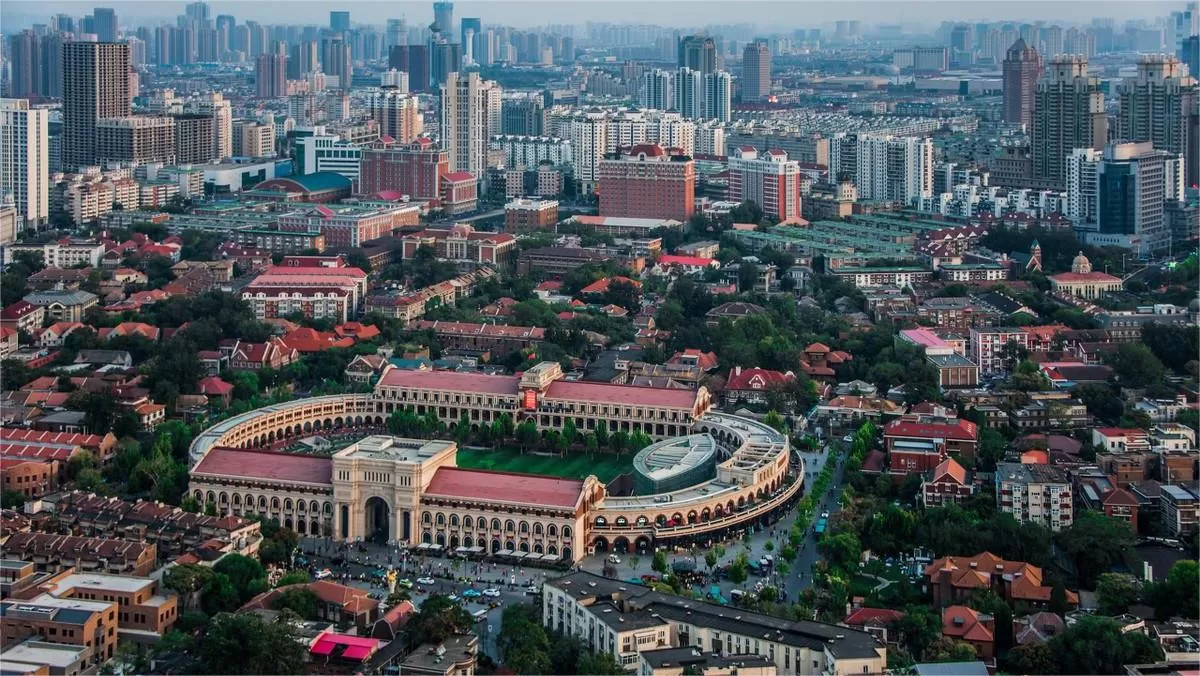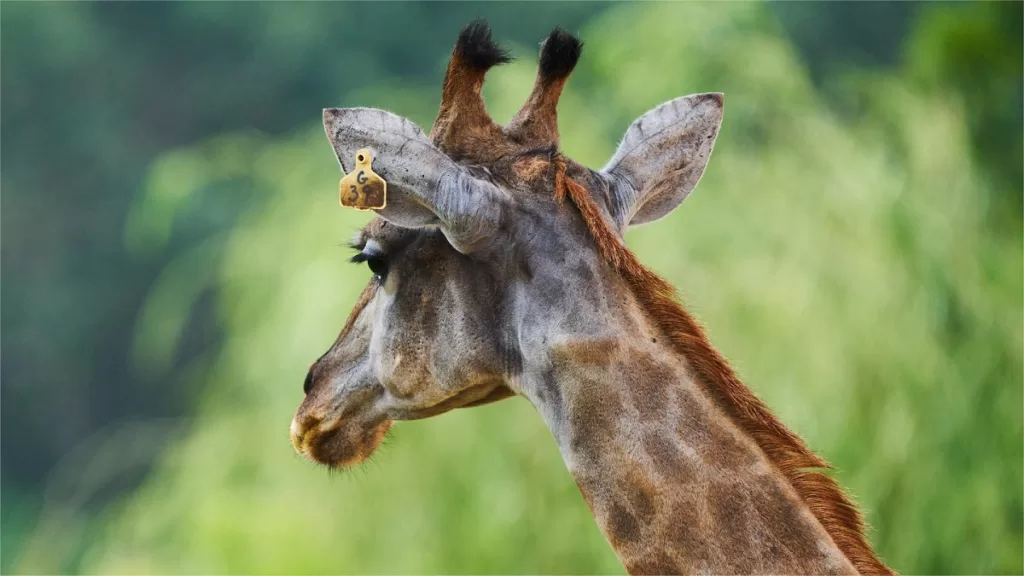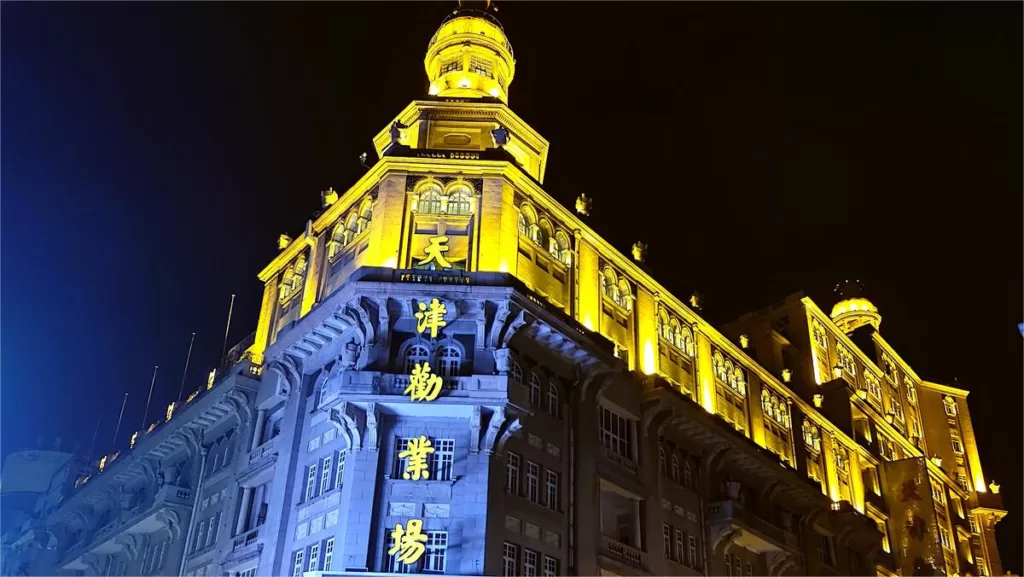The Five Great Avenues (五大道), located in the heart of Tianjin, form a rectangular cultural and tourist district bordered by Chengdu Road to the south, Machang Road to the north, Xikang Road to the east, and the intersection of Machang Road and Nanjing Road to the west. Encompassing a vast area of 1.28 square kilometers, crisscrossed by 23 roads spanning a total length of 17 kilometers, this district stands as a testament to the architectural grandeur of a bygone era.
Within this expansive region, an impressive total of 2,185 buildings grace the landscape, with over 423 structures showcasing the architectural splendor of the 1920s and 1930s. Among them, 347 are designated as cultural heritage protection units, contributing to the rich historical tapestry of the area. Notably, there are over 200 residences associated with renowned figures from modern and contemporary history, providing a glimpse into the lives of those who shaped the cultural and intellectual landscape.
The architectural styles within the Five Great Avenues are a captivating blend of Gothic, Baroque, Romanesque, and Byzantine influences. Moreover, the district boasts a unique fusion of Southern European medieval styles and 19th-century eclecticism. A veritable global architectural exposition, more than 230 buildings exhibit the influences of countries such as England, France, Italy, Germany, and Spain. Aptly dubbed a “World Architectural Expo,” this area stands as the most intact collection of Western-style buildings in Tianjin and, indeed, across the nation.
The Five Great Avenues serve as not just a window into the past but also as a living museum, preserving the architectural diversity and historical richness that have come to define this cultural treasure trove. Visitors can stroll through the streets and avenues, immersing themselves in the elegant charm of a bygone era, making this district an essential destination for those seeking to explore the architectural and cultural heritage of Tianjin and beyond.
Table of Contents
- Basic Information
- Location and Transportation
- History of Five Great Avenues
- Buildings on Five Great Avenues
- The Davison Building
- Xu Shichang’s Former Residence
- Cao Kun’s Former Residence
- Prince Qing’s Mansion
- Beijiang Museum
- Xian Nong Courtyard
- Ma Zhanshan’s Former Residence
- Former Office Site of the Eighth Office of the Tianjin Communist Party Committee
- Ji Hongchang’s Former Residence
- Yang Shisan’s Former Residence
- Richard Frey’s Former Residence
- Other Buildings
- Highlights of Five Great Avenues
- Vlog about Five Great Avenues
- Useful Tips SUmmarized from Reviews
- Attractions near Five Great Avenues
Basic Information
| Website | http://www.iwudadao.cn/ |
| Estimated Length of Tour | About 2 hours |
| Ticket Price | Admission to the area is free. But you need to pay an extra price for entering the former residences of various celebrities and museums. |
| Opening Hours | 24 hours a day |
| Telephone Number | 0086-022-23307222 |
Location and Transportation
The Five Great Avenues is located in the Heping District of Tianjin, China. They are situated in close proximity to each other, forming a picturesque neighborhood within the city. To get there, you can choose the following ways:
Bus: Take bus 13, 608, 685, 826, 858, 862, 904, or 906, get off at Tianjin Foreign Studies University Stop (外国语大学站), and you will be standing at the south edge of the area.
Metro: The nearest metro station to the Five Great Avenues is the Small White Building (小白楼) on line 1. After getting out of the station, you will be standing at the east end of the area.
History of Five Great Avenues
Early Form
In the late 19th and early 20th centuries, the area now known as the Five Great Avenues was originally a swampy and desolate stretch of land on the southern outskirts of Tianjin. Scattered across this barren landscape were simple, makeshift dwellings, known by colloquial names such as “Twenty Houses,” “Sixty Houses,” and “Eighty Houses.” These rudimentary settlements marked the initial phase of what would later become a prestigious neighborhood.
Initial Development
The transformation of this area began in 1903 when the British concession expanded southward beyond the Wall River, incorporating this vast territory into what was referred to as the “British Extra-Mural Extension.” This expansion included the region now bounded by Nanjing Road, Machang Road, Xikang Road, and Yingkou Road. This district, known today as the Five Great Avenues, began to take shape as part of the British concession.
Following the 1911 Xinhai Revolution, which marked the end of the Qing Dynasty, many Qing aristocrats, nobles, and former officials relocated from Beijing to the foreign concessions in Tianjin. In addition, numerous wealthy merchants, influential figures, celebrities, and key political figures from the Beiyang Government period also made their homes here. The Five Great Avenues area thus became a “nation within a nation,” providing a political refuge during times of social and governmental upheaval. The strategic geographic location, coupled with the commercial opportunities afforded by Tianjin’s ports and customs facilities, made this district highly desirable, setting the stage for its historical and cultural evolution.
Modern Era
The origins of the name “Five Great Avenues” remain somewhat unclear, with two main theories prevailing. One theory suggests that the name emerged during the 1950s and 1960s, a period when the area was predominantly inhabited by intellectuals and government officials. The name likely derives from the five long streets within the district: Machang Road, Munan Road, Dali Road, Chongqing Road, and Chengdu Road, excluding the shorter Changde Road.
The second theory is posited by Tianjin local historian Jin Pengyu, who references the recollections of former Heping District Deputy Mayor Pang Qizhong. According to this account, the name “Five Great Avenues” gained popularity in the 1980s during the tenure of Li Ruihuan as Mayor of Tianjin. During this period, the housing authority, led by Chief Engineer Zhang Shiqing, designated a specific area for housing renovation projects. This area included the roads Chengdu Road, Nanjing Road, Machang Road, Xikang Road, and Guizhou Road. As a result, the term “Five Great Avenues” became widely used to describe this section of Tianjin, eventually becoming its official moniker.
Buildings on Five Great Avenues
The Davison Building
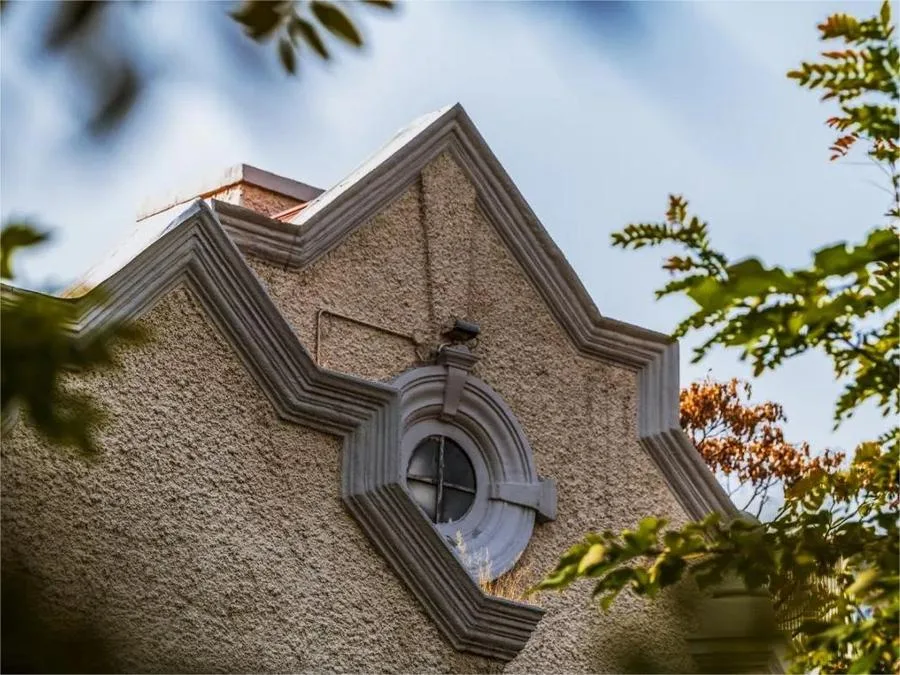
The Davison Building is one of the earliest constructed buildings on the Five Great Avenues, built in 1905, making it the first villa in this area and over a century old. Originally named Qingmingtai, this location is a historical landmark. Following the Boxer Rebellion, the area became part of the expanded German concession, and the building initially served as the residence for a German military officer and his family. It is said that the German officer had visited Spain in his youth and admired Spanish architecture, prompting him to commission an architect to design his home in a Spanish style. The house was surrounded by a European-style garden, planted with fruit trees and lawns, offering a picturesque setting for enjoying flowers in spring and fruit in autumn. The southern side of the house featured a small tennis court, while the sides and northern parts had flower beds, greenery, and various trees, including crabapple and wisteria. After World War I, the German officer and his family returned to Germany, and the building was later occupied by British expatriate Davison.
Xu Shichang’s Former Residence
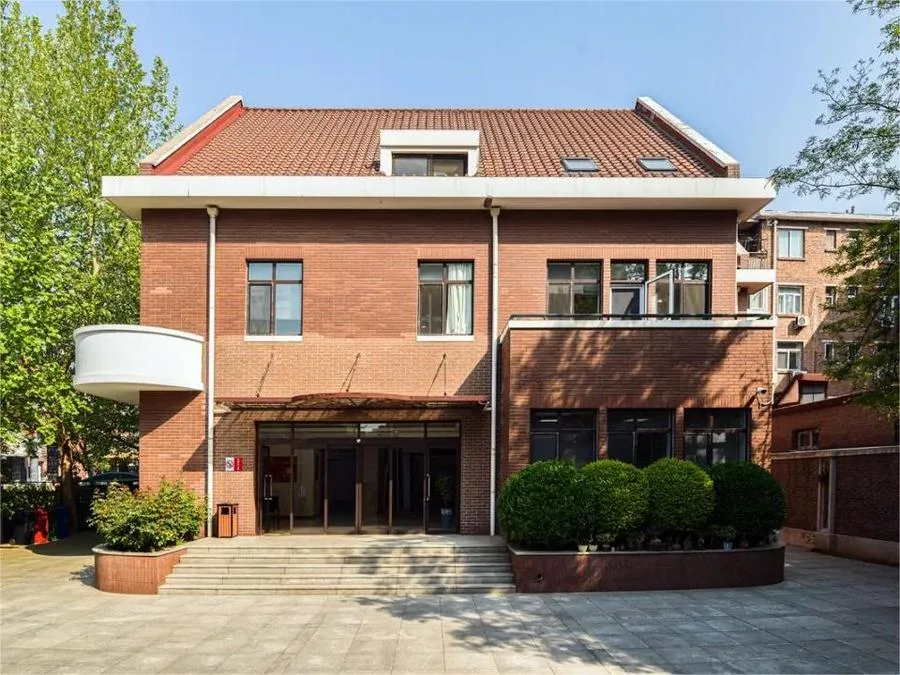
Located at 255 Xinhua Road, Xu Shichang’s residence is the largest property he owned in Tianjin. In 1927, Xu Shichang purchased a plot of land at Oxford Road in the British concession (now at the intersection of Nanshan Road and Munan Road in Heping District). He subsequently built nine independent houses, totaling 181 rooms, with a combined construction area of 1,085 square meters. The primary residence is a three-story Western-style building with a mixed structure and red brick-tile roof. The entrance features a flight of four steps leading to a platform, with a facade made of red terracotta bricks. The first floor includes a living room, lounge, dressing room, dining room, and bathroom. The second floor contains bedrooms, a study, an office, and an inner living room. The third floor has attic rooms. Although Xu Shichang did not reside here for long, the house mainly served as the residence for his relatives. The Xinhua Road residence holds significant meaning in Xu Shichang’s life. Although he passed away in his residence on Taian Road, his coffin was temporarily kept in the Xinhua Road house until his burial, marking it as his final resting place in Tianjin.
Cao Kun’s Former Residence
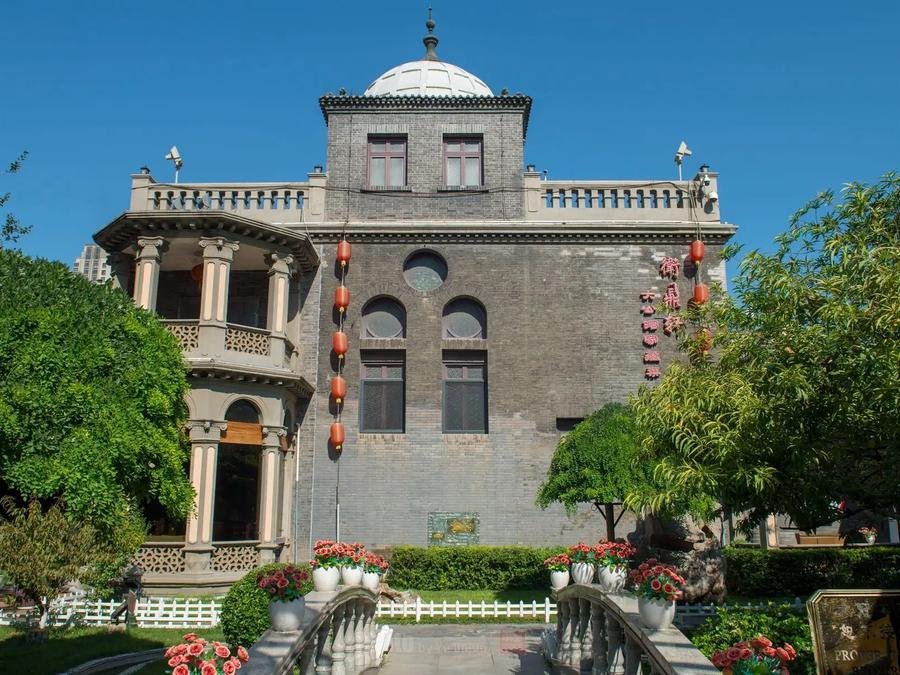
Cao Kun’s former residence, located at No. 2 Nanhai Road in Heping District, Tianjin, was constructed in 1927. Cao Kun, whose courtesy name was Zhongshan (1862-1938), hailed from Dagukou, Tianjin. He graduated from Tianjin Military Academy and later joined Yuan Shikai’s camp, earning significant favor and titles such as Tiger General and First-Class Earl. He served as both the military governor and civil governor of Zhili Province. In 1919, he was chosen as the leader of the Zhili clique. In 1922, he defeated Zhang Zuolin in the First Zhili-Fengtian War, and the following year, he forced President Li Yuanhong to resign and became the President of the Republic of China through a bribed election. However, in 1924, he was ousted by Feng Yuxiang during the Second Zhili-Fengtian War and returned to Tianjin in 1927 to live in seclusion. Despite attempts by Japanese puppet authorities to entice him with high-ranking positions during the occupation of North China, Cao remained unmoved and maintained his integrity. He passed away in May 1938 at this residence.
The residence is situated at the intersection of Nanhai Road, Chongqing Road, Hebei Road, and Luoyang Road. It covers an area of 900 square meters with a building area of 1,244 square meters. This three-story brick-and-mortar Western-style villa includes a basement. The main façade features a central protruding section supported by columns above and below the waistline, with a four-slope eaves design on the top floor, giving the building a stable and imposing appearance.
Prince Qing’s Mansion

Prince Qing’s Mansion, located at No. 55 Chongqing Road in Heping District, Tianjin, was built in 1922. This mansion was once hailed as the crown jewel of Chinese residences in the former British concession. In 1925, Aisin Gioro Zaizhen, the last “hereditary and unchangeable” prince of the Qing dynasty, moved his family to Tianjin and purchased this mansion with a substantial sum of money, living there for 22 years. The mansion became known as Prince Qing’s Mansion. The building showcases intricate craftsmanship and luxurious materials, reflecting the noble status of the prince.
After its renovation in 2011, the mansion was transformed into a comprehensive cultural tourism, dining, and lodging destination. Over nearly a century, Prince Qing’s Mansion has embodied the architectural charm and legendary history, narrating the cultural legacy and transformation of Tianjin. The exquisite details and opulent materials used in the mansion highlight its royal pedigree, making it a significant historical and cultural landmark in Tianjin.
Beijiang Museum
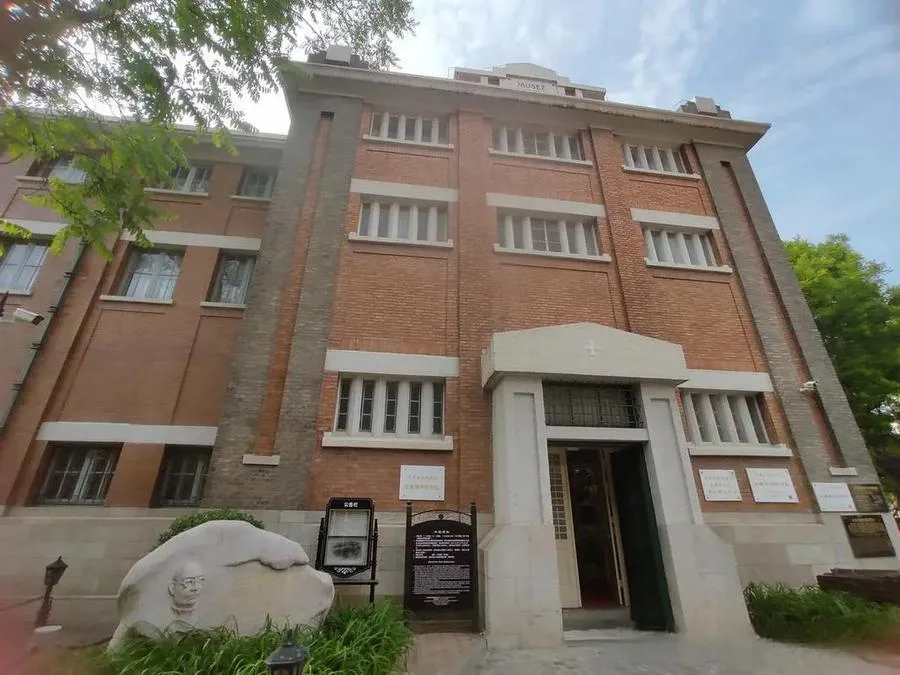
The Beijiang Museum, located at No. 117 Machang Road within the campus of Tianjin Foreign Studies University in Hexi District, is one of modern China’s richest natural history museums. It was founded in 1914 by the French natural scientist, naturalist, and priest, Émile Licent. The museum houses over 200,000 specimens of paleontology, paleoanthropology, and flora and fauna collected from northern Chinese provinces and eastern Tibet. Many of these specimens are unique to the world.
The museum’s exhibition hall was pioneering in its architectural design, featuring central crutch columns with aesthetic appeal. This design is both visually pleasing and functional, meeting the specific requirements of museum architecture. As a result, the Beijiang Museum was hailed as a first-class museum globally during its time. After a period of closure, the Beijiang Museum was reopened to the public in 2016, continuing its legacy as a significant repository of natural history and a model of early modern museum architecture.
Xian Nong Courtyard
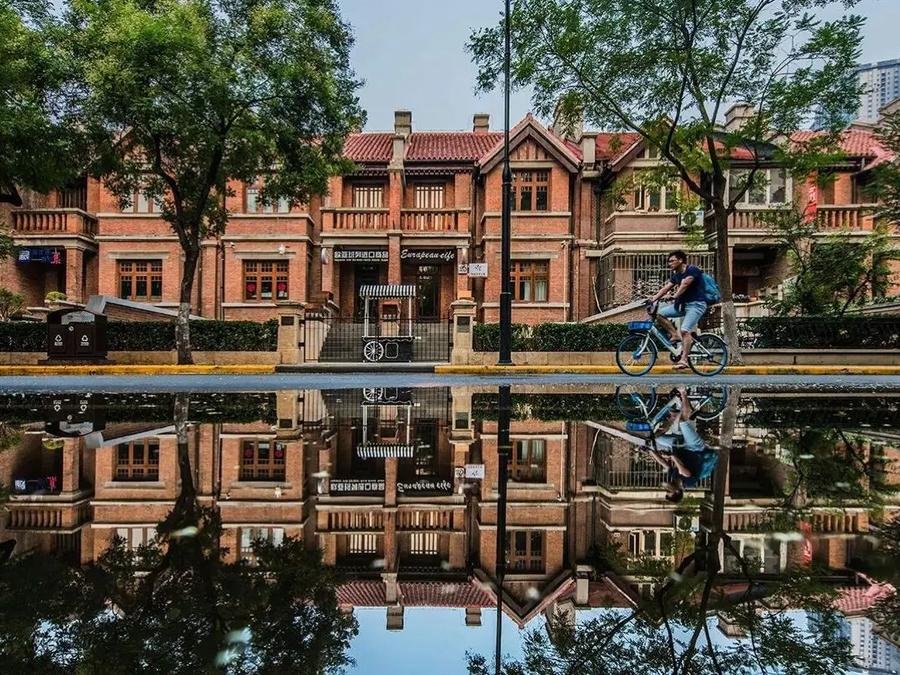
Located at No. 288 Hebei Road in Heping District, Xian Nong Courtyard was established in 1925. It was designed by British engineer R. H. Reid for the Xian Nong Real Estate Company. The courtyard comprises two rows of terraced houses and two separate apartment-style buildings. Each residence features a private front garden and a rear yard, with functional and rational layouts typical of middle-class housing of the period. Named after the employees of the Xian Nong Company who resided there, Xian Nong Courtyard is a prime example of the residential architecture tailored to the needs of the burgeoning middle class.
The restored Xian Nong Courtyard has become a vibrant space, hosting international top-tier home goods stores, well-known cultural enterprises, and the flagship store of Starbucks in North China, among other brands. It also serves as a public art plaza on the Five Great Avenues, fostering a bridge between artists and the public. The courtyard regularly hosts exhibitions and cultural events such as sculpture, installation art, photography, painting, and calligraphy shows, as well as cultural salons. These activities contribute to its role as a dynamic cultural hub, enriching the historical and cultural tapestry of Tianjin.
Ma Zhanshan’s Former Residence

Ma Zhanshan’s former residence is located at No. 11 Hunan Road in Heping District. This two-story brick-and-wood structure, with parts extending to three stories, was built in the 1930s and showcases modern architectural features. Between 1933 and 1937, it was home to the renowned anti-Japanese patriot and general, Ma Zhanshan.
The residence has been meticulously restored and now functions as the Five Great Avenues’ first memorial dedicated to the War of Resistance Against Japan, offering free public access. The memorial houses permanent exhibitions such as the “General Ma Zhanshan Historical Exhibition” and “Stories of Xian Nong Courtyard in the Five Great Avenues.” Through extensive displays of texts, photographs, videos, and artifacts, the museum vividly recounts General Ma’s unwavering commitment to the resistance movement and his storied military career.
Former Office Site of the Eighth Office of the Tianjin Communist Party Committee
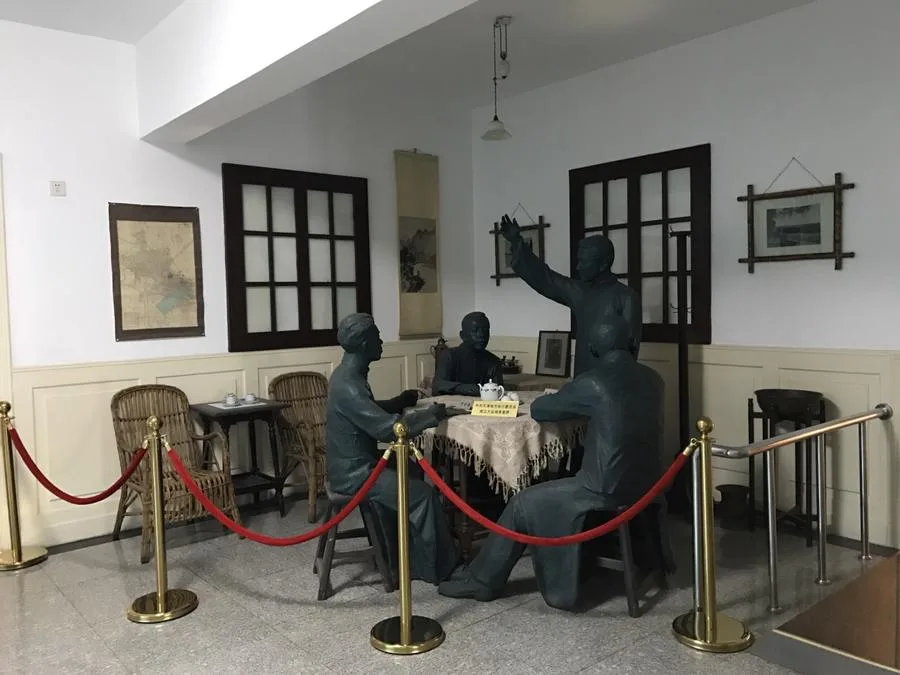
The former office site of the Eighth Office of the Tianjin Communist Party Committee is situated at No. 17 Qiuzhi Lane on Changsha Road. In April 1927, the Committee’s office relocated to this site within the British Concession. The office served as the workplace and residence of Li Jida, the committee secretary.
On August 9, 1927, due to betrayal, Li Jida and his wife were arrested at Nankai Sports Club Dianhua School. Subsequently, on November 8, Li Jida and others were executed at the Nanshi execution ground. This building thus became the last operational site for the Tianjin Communist Party Committee.
Constructed in 1926, the building features a two-story design with a partial basement, covering an area of approximately 203.4 square meters. The site stands as a poignant reminder of the sacrifices made by early Communist Party members in Tianjin, reflecting a crucial period in the city’s revolutionary history.
Ji Hongchang’s Former Residence
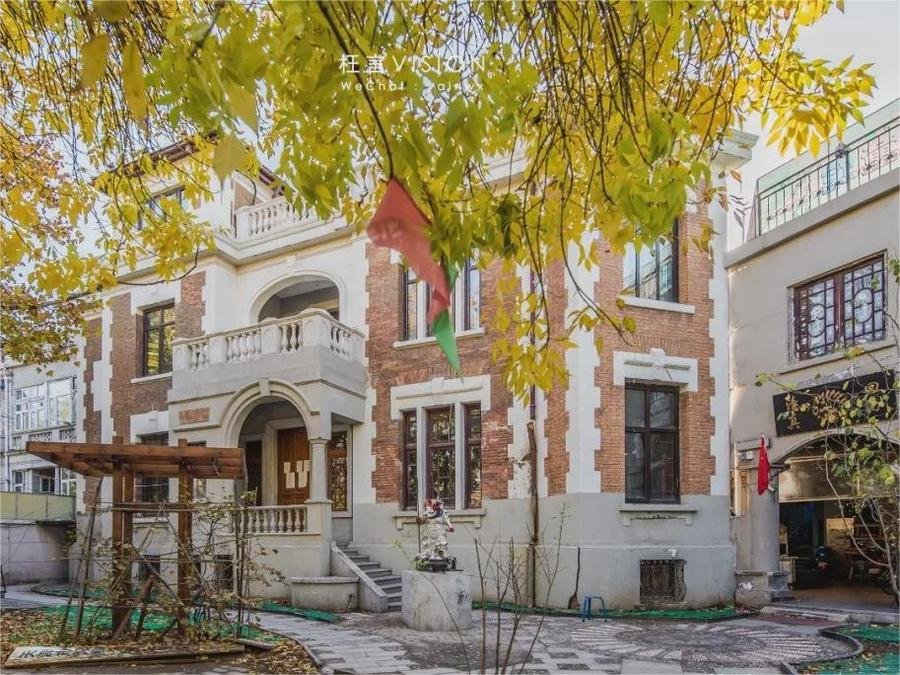
Ji Hongchang’s former residence is located at No. 3 Qingyun Lane, Xinhua Road, within the Five Great Avenues area of Tianjin. Ji Hongchang (1895–1934), originally named Hengli and also known by his alias Shiwu, was a notable figure in Chinese military and political history. Born in Fugou, Henan Province, Ji started his career as an apprentice in a jewelry shop in 1910. In August 1913, he joined Feng Yuxiang’s forces and steadily climbed the military ranks over the years. By June 1926, Ji was appointed regimental commander, and in April 1927, he became the commander of the 19th Division. His rise continued as he was promoted to the commander of the 10th Army in May 1929 and concurrently served as the Chairman of Ningxia Province.
In September 1930, Ji was appointed the General Commander of the 22nd Route Army, doubling as the commander of the 30th Army. After a brief period of traveling abroad in September 1931, he returned to China in early 1932 and moved to Tianjin, where he established contact with the North China Political Security Bureau of the Chinese Communist Party. Later that year, he joined the Communist Party of China. In May 1933, he took command of the Second Army of the Chahar People’s Anti-Japanese Allied Army. Following the failure of the Allied Army, Ji returned to Tianjin and continued his anti-Japanese activities, which drew the ire of the Nationalist government. In October 1934, for security reasons, he moved his residence from the French Concession’s Xiafei Road to No. 3 Oxford Villas in the British Concession, now No. 3 Qingyun Lane, Xinhua Road.
Qingyun Lane was constructed in 1932, covering an area of approximately 3,500 square meters with a building area of about 6,300 square meters. The residence comprises two two-story brick-and-wood row houses. The exterior of the ground floor features a cement block plastered facade, while the second floor is characterized by clean, sulfur-fired brick walls. Decorative elements include “shuai geda” plasterwork on the parapet walls and ornate lines where the parapet meets the brick facade. The balconies are designed in both recessed and protruding styles, adding architectural interest.
The roof is designed with large tube tiles and adorned with intricately carved dormer windows. Each house includes front and back yards, as well as a basement. The residences are spacious, with rational interior layouts and comprehensive facilities, making them high-end apartment-style homes of the era, showcasing eclectic architectural characteristics.
Yang Shisan’s Former Residence
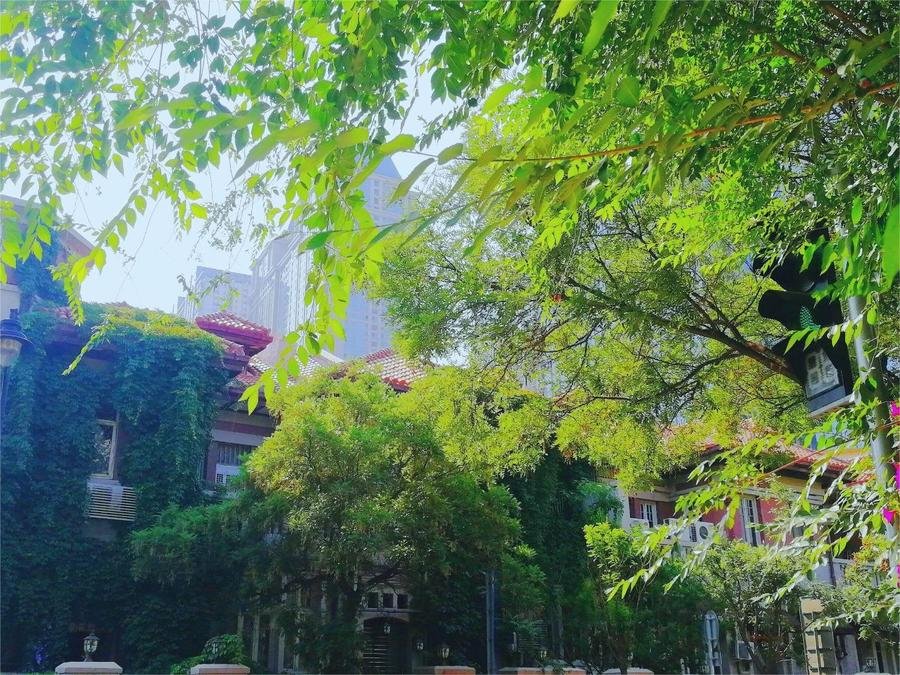
Yang Shisan’s former residence is located at No. 4 Pengchengli, Chengdu Road, within the Five Great Avenues area of Tianjin. Yang Shisan (1889–1939), whose given name was Yanlun and courtesy name was Canru, was also known as Yang Yumin. He hailed from Qian’an in Zhili Province (now Hebei Province) and was the 13th of his brothers, which is why he was commonly known as Yang Shisan. He was an expert in papermaking and served as a professor at Hebei Institute of Technology.
In 1906, Yang enrolled in the Tianjin Craft School. In 1920, he went to the United States for further studies and earned a doctorate degree. Upon returning to China, he moved to London Road in the British Concession (now Chengdu Road) in early 1930. Utilizing his professional identity and social standing, Yang provided cover for underground Communist Party members to carry out their activities in Tianjin. His residence became an important contact point for the party until the early years of the Anti-Japanese War.
During the initial stages of the war, Yang Shisan remained in Tianjin and maintained contact with Yao Yilin, the secretary of the Tianjin Municipal Committee of the Communist Party of China. In the spring of 1938, he organized and participated in the anti-Japanese armed uprising in eastern Hebei. Later that year, in November, he went to work at the headquarters of the Eighth Route Army. Yang Shisan passed away in July 1939 while relocating. In September, the Eighth Route Army held a memorial service in his honor.
Yang Shisan’s former residence was built during the Republic of China period and is a two-story house with a basement. This structure played a significant role in the underground resistance efforts against Japanese occupation.
Richard Frey’s Former Residence
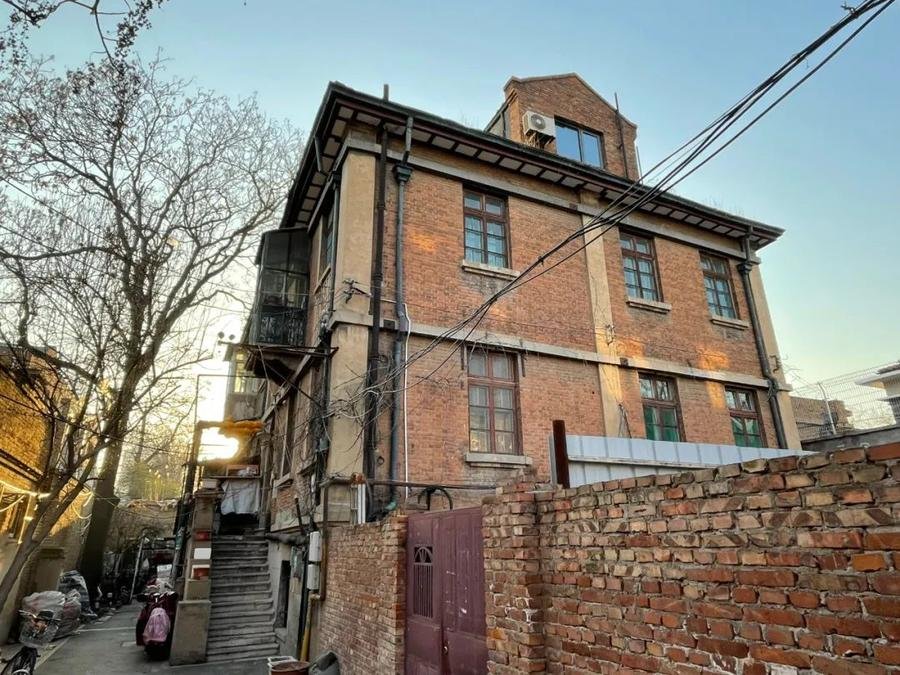
Richard Frey’s former residence is situated at No. 48 Yunnan Road. Richard Frey (1920–2004), originally named Richard Stein, was an Austrian who joined the Austrian Communist Party in 1937. In January 1939, he arrived in Shanghai, China, where he worked in a refugee temporary infectious disease hospital. By March of the same year, he moved to Tianjin and worked in the radiology and laboratory departments at the German-American Hospital and Dr. Ma’s Hospital.
In 1940, Frey established contact with the underground Communist Party in Beiping (now Beijing) and undertook the responsibility of transporting medical supplies and other materials to the anti-Japanese base areas. His involvement was critical in supporting the resistance movement during a time of great need.
Frey’s former residence, built during the Republic of China era, is a two-story brick and wood structure with a semi-basement. The southwest portion of the second floor was where Frey lived. The building’s historical significance is underscored by Frey’s contributions to the anti-Japanese effort and his role in the medical and logistical support network that was vital to the resistance.
Other Buildings
- Located at No. 64 Chongqing Road, Gong Xinzhan’s former residence is a historical site in the Heping District of Tianjin.
- Zhang Shaozeng’s former residence is situated at No. 334 Hebei Road and was built in 1923.
- Wellington Koo’s former residence is at No. 267 Hebei Road, built in 1927. Koo, a famous Chinese diplomat, is known for refusing to sign the Treaty of Versailles in 1919, preserving national dignity.
- Pan Fu’s former residence is located at No. 2 Machang Road and was built in 1920.
- The British Grammar School, built in 1927, is located at No. 59 Hubei Road.
- Zhang Xueming’s former residence is at No. 50 Munan Road, built in 1925.
- Li Shufu’s former residence is located at No. 28 Munan Road and was built in 1938.
- The former Manchukuo Consulate is situated at No. 26 Munan Road and was constructed in 1943.
- Sun Dianying’s former residence is at No. 20 Munan Road, built in 1930.
- Zhou Zhifu’s former residence is located at No. 277 Hebei Road and was built in 1933.
- Wu Songping’s former residence is situated at No. 117 Kunming Road and was built in 1934.
- Lin Honglai’s former residence is at No. 2 Changde Road and was built in 1935.
- Zhang Zizhong’s former residence is located at No. 60 Chengdu Road and was constructed in 1937.
- Sun Jilu’s former residence is at No. 20 Zhengzhou Road, built in 1939.
- Zhang Zuoxiang’s former residence is located at No. 4 Chongqing Road.
- Naisen’s former residence is situated at No. 70 Munan Road and was built in 1928.
- Li Mianzhi’s former residence is at No. 74 Munan Road, constructed in 1937.
- Xu Shizhang’s former residence is located at No. 126 Munan Road and was built in 1922.
- Gao Shuxun’s former residence is at No. 141 Munan Road.
- Zhou Shutao’s former residence is situated at No. 129 Munan Road and was built in 1938.
- Zeng Yanyi’s former residence is located at No. 1 Changde Road.
- Cai Chengxun’s former residence is at No. 1 Dali Road and was built in 1935.
- Zi Yufu’s former residence is located at No. 37 Dali Road.
- Chen Guangyuan’s former residence is situated at No. 48 Dali Road and was built in 1924.
- Jin Bangping’s former residence is at No. 114 Chongqing Road.
- Yong Jianqiu’s former residence is located at No. 60-62 Machang Road and was built in 1920.
- Anle Village is situated at No. 98-110 Machang Road and was built in 1933.
- Gedalou is located at No. 283-295 Hebei Road and was constructed in 1937.
- Bian Wannian’s former residence is at No. 57 Yunnan Road, built in 1937. This residence is notable for its unique architectural design and historical context.
- Guan Linzheng’s former residence is situated at No. 97 Changsha Road.
- Zhu Qiqian’s former residence, built in 1922, is located at No. 164 Machang Road.
Highlights of Five Great Avenues
Machang Avenue (马场道)

Machang Avenue, also known as Italian Street, is a captivating avenue that showcases beautiful Italian Renaissance-style mansions. These impressive buildings were once the residences of foreign diplomats and wealthy Chinese merchants. As you walk along Machang Avenue, you’ll be mesmerized by the elegance of the mansions, characterized by their intricate designs, grand facades, and spacious courtyards. The avenue exudes an air of opulence and provides a glimpse into Tianjin’s colonial past.
Munan Avenue (睦南道)
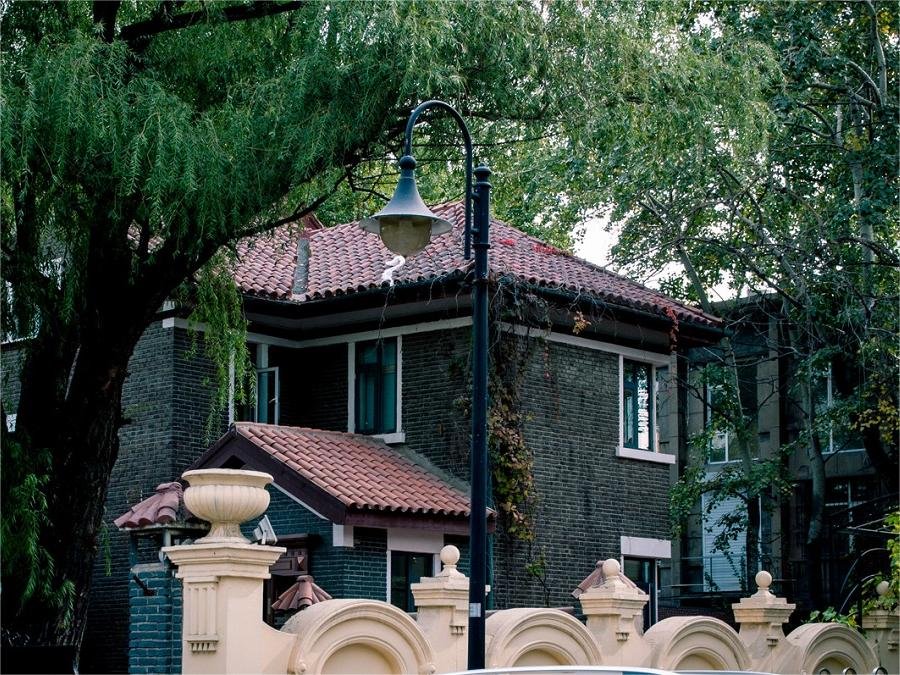
Munan Avenue is famous for its charming French-style villas and mansions. As you stroll along this enchanting avenue, you’ll be transported to a world of elegance and grace. The architecture reflects a harmonious blend of French and Chinese influences, with delicate balconies, decorative detailing, and well-manicured gardens. The French villas along Munan Avenue are a testament to Tianjin’s historical connection with France and offer a delightful aesthetic experience.
Dali Road (大理道)
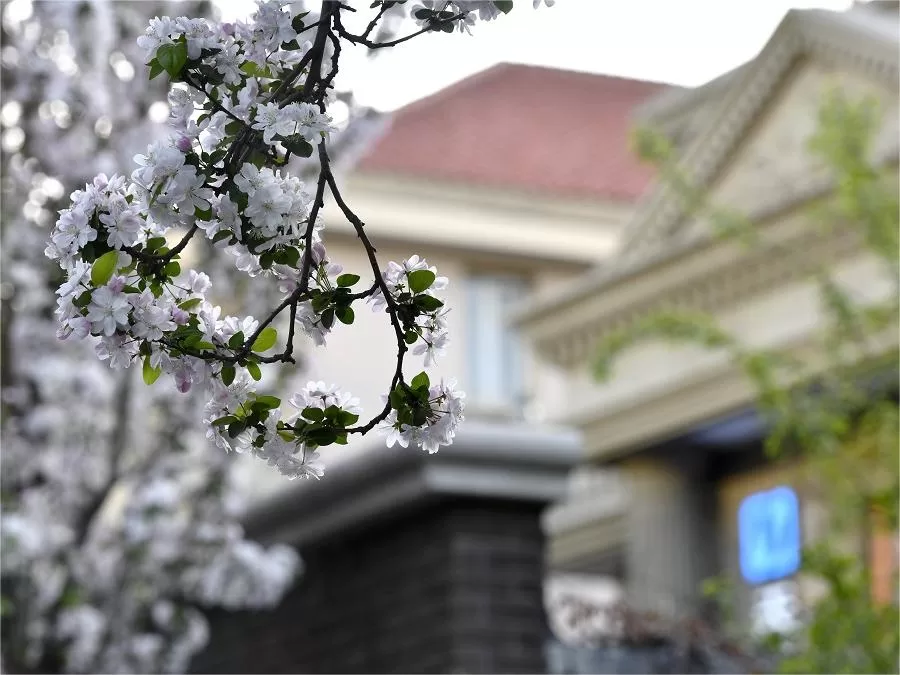
Dali Road is a street that presents a diverse range of architectural styles, making it a fascinating destination for architecture enthusiasts. British, German, and Spanish influences are prominent along this road, showcasing Tianjin’s history of international exchanges. As you explore Dali Road, you’ll be captivated by the brick facades, pitched roofs, and ornate decorations that bring a touch of European charm to the avenue. The buildings on Dali Road stand as a testament to Tianjin’s cultural diversity and its openness to embracing different architectural aesthetics.
Chongqing Road (重庆道)

Chongqing Road is known for its remarkable Russian-style buildings, a reflection of Tianjin’s historical ties with Russia. This avenue provides a unique architectural experience with its onion-shaped domes, vibrant facades, and intricate ironwork. As you walk along Chongqing Road, you’ll feel as though you’ve stepped into a different era, surrounded by the distinct charm of Russian-inspired architecture. The buildings along this road serve as a testament to the historical connections between Tianjin and Russia, adding a unique flavor to the architectural landscape of the Five Great Avenues.
Chengdu Road (成都道)
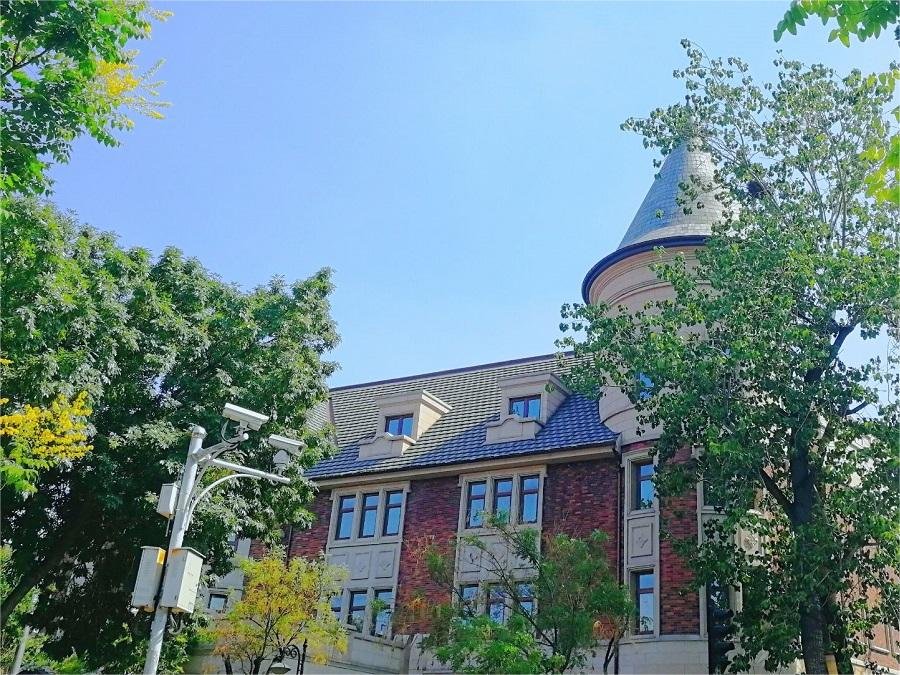
Chengdu Road is a street that offers a captivating blend of Chinese, Western, and Japanese architectural influences. As you venture along this avenue, you’ll encounter traditional Chinese courtyard houses, Western-style villas, and Japanese-inspired mansions. Chengdu Road presents a fascinating journey through different cultural aesthetics, allowing visitors to appreciate the unique architectural elements of each style. The variety found on Chengdu Road is a testament to Tianjin’s history as a melting pot of different cultures and architectural traditions.
Vlog about Five Great Avenues
Useful Tips SUmmarized from Reviews
Start at Xiao Bai Lou Station (Exit A): Begin your exploration at Xiao Bai Lou Subway Station (Exit A). As you ascend the elevator, you’ll be greeted with stunning views of the Tianjin Concert Hall and Cheese Lin Restaurant, perfect for photography.
Consider Alternate Modes of Transportation: The Five Great Avenues are expansive, and walking can be tiring. Consider alternative modes of transportation such as cycling or taking a tricycle tour. Tricycle tours offer the flexibility to stop for photos and provide guided commentary. Compare prices before selecting a tricycle service.
Timing Matters: Avoid arriving too early at the Five Great Avenues, as many shops may not be open. The best time to explore is after 11 AM when more establishments are likely to be in full operation.
Seasonal Flower Viewing Guide: For those interested in the seasonal beauty of flowers along the Five Great Avenues, the suggested viewing periods are:
- Camellia Flowers: March 18th – April 3rd
- Cherry Blossoms: March 18th – April 10th
- Peach Blossoms: March 13th – April 4th

